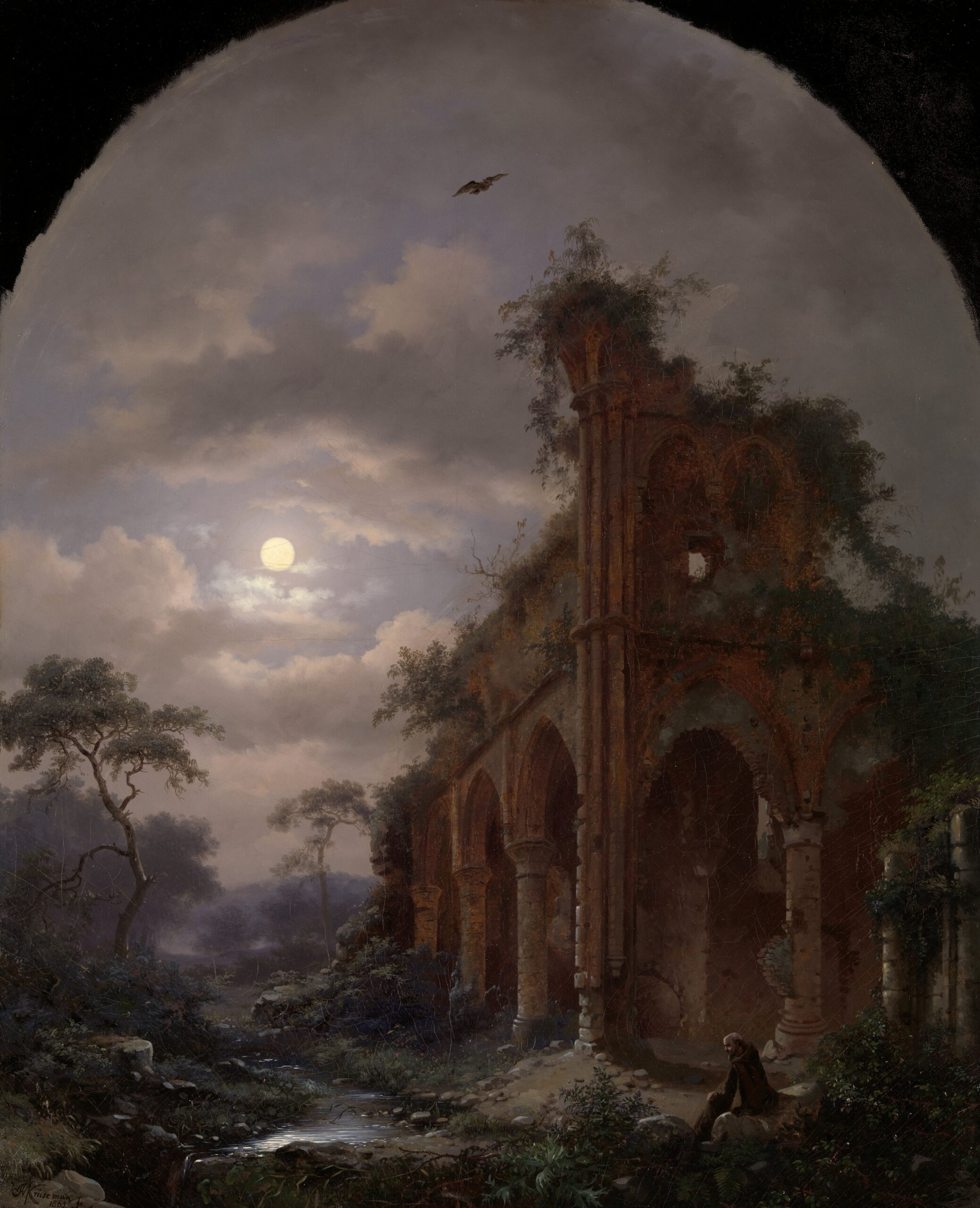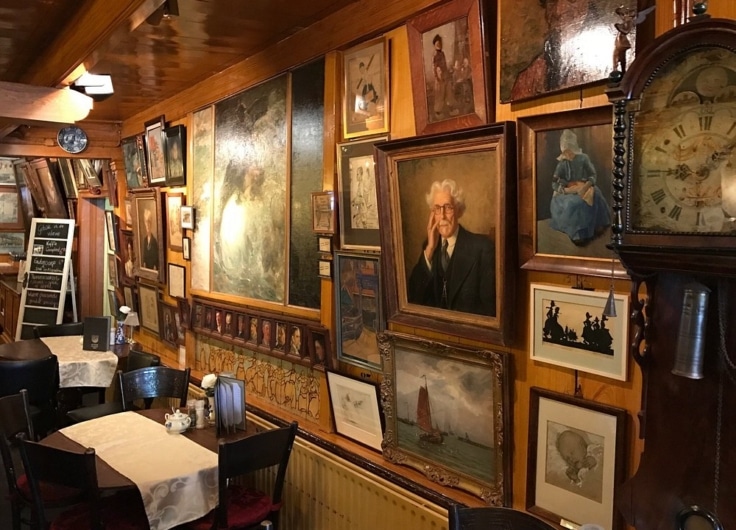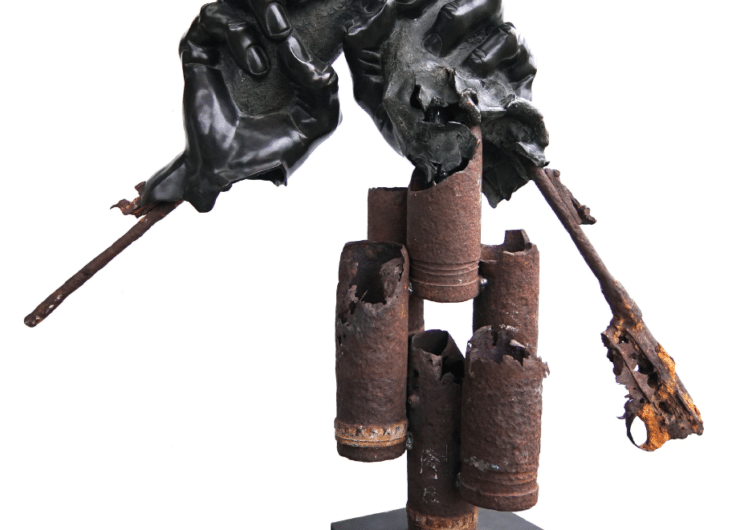Eighteen young writers from Flanders and the Netherlands have brought nineteenth-century artefacts from the Rijksmuseum to life. They wrote their stories in response to the question: what do you see when you look at these objects through the lens of impending doom? We join Dagmar Dirkx as they look at the painting Monk Meditating near a Ruin by Moonlight by Frederik Marinus Kruseman. ‘We need to talk about lichens.’
 Frederik Marinus Kruseman, Monk Meditating near a Ruin by Moonlight, 1862
Frederik Marinus Kruseman, Monk Meditating near a Ruin by Moonlight, 1862© Rijksmuseum Collection, Amsterdam
A Brilliant Mess
We need to talk about lichens.
Do you see that tiny, yellowish green splash of paint on the stone bench? That may well be a common sunburst lichen. And above the chapel’s pointed arches? A wavy rim lichen. The connoisseurs will also find the yellow bloodstain lichen, the tuberculated boulder lichen and the blackthread lichen. The entire site of the Villers-la-Ville abbey is an explosion of lichens.
You’re not here for the varicellaria lactea, I know that. You bought a ticket in the hope of a dose of affordable romanticism, anticipating a fun quest for an uncomplicated past. Getting a thrill out of someone else’s apocalypse, ruins and rubble that aren’t yours.
Don’t get me wrong. You have a right to that escape. That’s precisely why we leave many chewing gum lichens and acrocarpous mosses undisturbed: a bit of decline always looks good. The same is true for Villers-la-Ville. The lichens appeared as soon as the foundation stone was laid in 1190. They grew an indefatigable 0.1 millimetre per year during revolutions, survived many an independence struggle, kept going after World Wars and were the first to fight back right after a nuclear disaster. They watched as Frederik Marinus Kruseman tried to capture a meditating monk for posterity in 1862. To this day, they happily moulder on. No pillar remains untouched, no brick is safe.
In the past we let the lichens get on with it. These days, we sometimes prefer an unspoiled past, as evidenced by the following communication from the National Heritage Protection Agency:
Depending on whether or not lichen colonisation is perceived to be a problem, appropriate measures can be taken, with conservators having a choice between removal or control.
Perhaps you already have a bottle of weedkiller at the ready. You may be clinging to a world in which doom looks controllable. To no avail. Let me assure you: resistance against this form of colonisation is futile. The lichens will not be tamed.
You know, one day the contours of this monk will fade. The first signs of craquelure are already visible around his tonsured head. With infinite patience, the lichens will work their way towards the Romanticism room, slowly mingle with Kruseman’s brush strokes, until finally, the hand of the Rijksmuseum’s best restorer will be vanquished.
As for myself, I’d rather succumb and surrender. To their ecstatic colours, erratic shapes, outlandish structures and tongue-twisting names. I worship the brilliant symbiosis between algae and fungi. I relish the sight of that fantastic dirty yellow, orange-blue, grey-green, fiery red spectacle.
Bischoff’s pepper-spore lichen,
brown rim lichen, aromatic bruised lichen,
grey-rimmed firedot lichen, black spot lichen, Alpine bloodspot lichen and wood-spot rim lichen, reindeer lichen, tree moss, powdered sunshine lichen, pitted stone lichen, Flotow’s dimple lichen, Hochstetter’s wart lichen and Sandsted’s wart lichen, map lichen.
Go on, cover me.












